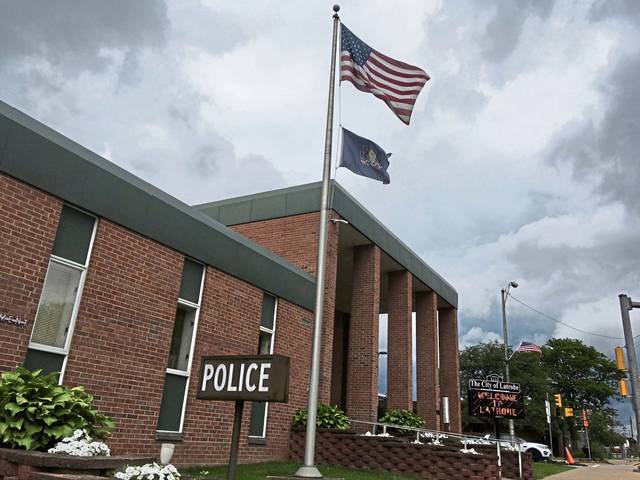Storm water fee proposed for Latrobe property owners
Latrobe is the latest area municipality to consider charging property owners to help meet tougher storm water management mandates.
Michael Gray, the interim city manager, wants council members to consider establishing a user fee.
A first step, he said, would be an aerial survey to determine an “equivalent residential unit” or the square footage of hard surfaces that contribute to water runoff on the average residential property. That figure would be used in setting the proposed user fee.
Gray explained that Latrobe, like more than 600 other small urban communities in Pennsylvania, is required by the state Department of Environmental Protection to reduce the amount of sediment carried into local waterways — in this case, the Loyalhanna Creek — by storm water runoff.
According to a 2018 plan submitted to the DEP, Latrobe is required to reduce its sediment flow by 10 percent — or a minimum of about 114,700 pounds — annually over five years.
According to Gray, the cost of implementing that plan is estimated at $2 million, half of which the city would draw from its coffers to cover ongoing sediment reduction measures such as sweeping debris from streets and cleaning storm inlets.
The proposed user fee would help cover the remaining estimated annual cost of about $200,000 to implement storm water “best management practices” in 11 sectors in the city, Gray said. Those practices could include developing rain gardens, planting trees or installing storm water detention ponds, he said.
“Traditionally, we have used the general fund to cover storm water activities,” Gray said. “But, unfortunately, with competing demands and limited growth with the general fund, we cannot do that.”
One option for implementing a user fee, Gray said, would be charging a flat rate for each residential property in the city while determining a relative charge for each large commercial property based on the square footage of impervious areas — surfaces such as building roofs, parking lots, driveways and sidewalks, where rain water runs off instead of soaking into the ground.
The fee could be added to billing for garbage collection service in the city, Gray suggested.
He said the city might offer property owners partial relief by granting credit for individual storm management practices, such as replacing a paved driveway or walkway with one featuring permeable paver blocks that allow water to seep into the ground.
In nearby Derry, the borough municipal authority recently took over management of the town’s storm sewers and has approved a $10 monthly fee for residential customers to help cover related costs, including those incurred in order to meet the DEP mandate.
The fee, which will first appear in customers’ July bills, is projected to raise about $130,000 in revenue, according to authority manager Amy Forsha.
“There’s not enough money in the borough budget to do everything that’s mandated,” she said. “It’s a start.”
Similar to what’s being proposed in Latrobe, a commercial property in Derry will be charged a fee based on the square footage of its impervious surfaces.
“A vacant grassy lot won’t be charged,” Forsha said.
In Allegheny County, Mt. Lebanon residents have been assessed a storm water management fee since 2011, paying anywhere from $8 to $24 per month.
Monroeville began charging property owners a new storm water fee in January, billed through the Turtle Creek Valley Council of Governments, according to municipal manager Timothy Little. It’s expected to raise $3.2 million annually.
Owners of residential properties are being asked to pay an annual fee of $120. Commercial properties and other larger parcels will be assessed a fee determined by comparing their impervious square footage to the municipality’s equivalent residential unit of 2,385 square feet. Thirty-nine property owners have appealed the fees they were assessed.
Little said Monroeville is ramping up its public works resources — with new equipment, additional personnel and a temporary building — in order to address storm water mandates.
One of the first projects, he said, will be redesigning storm water ponds. “We have 34 ponds now,” he said, noting homeowners associations were responsible for them. “Most have cattails and haven’t been kept up.”
Jeff Himler is a TribLive reporter covering Greater Latrobe, Ligonier Valley, Mt. Pleasant Area and Derry Area school districts and their communities. He also reports on transportation issues. A journalist for more than three decades, he enjoys delving into local history. He can be reached at jhimler@triblive.com.
Remove the ads from your TribLIVE reading experience but still support the journalists who create the content with TribLIVE Ad-Free.

